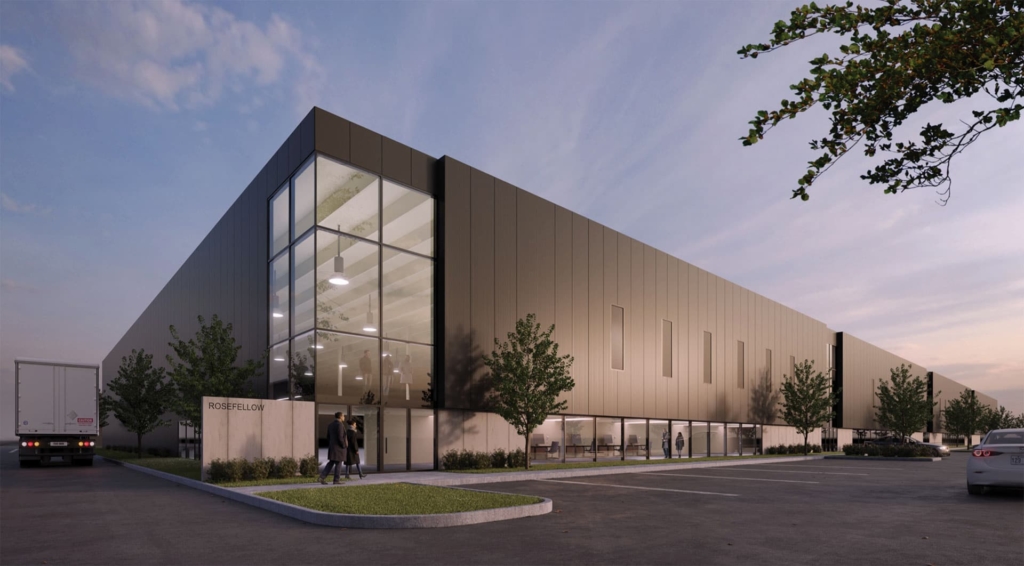Will Industrial Rents Surpass Retail Rents?

Industrial Assets Soar as Retail Demand Shifts
“Over the past 18 months, there is not a single asset class that has outperformed industrial real estate. Everyone wants to build it, buy it, and finance it.”
Canada’s industrial asset class is hotter than it’s ever been. During a recent interview, David N.H. Bell, a senior director of mortgage origination at Canada ICI’s Toronto office looks relaxed but serious when he talks about changes to Canada’s industrial asset class, a topic he knows inside and out. Leaning forward in his chair and leaning into what he knows, David describes the unprecedented changes in the industrial asset class and how these changes were accelerated by the pandemic.
“A massive industrial land grab happened over the past eighteen months and has shot up the price to buy and rent industrial space. Two to three years ago in Toronto the idea that industrial buildings would ever sell for over $275 a foot seemed ridiculous. But today we’re seeing good product trade at that number or higher. Pricing has increased in some areas by 100%.” There’s disbelief in David Bell’s voice as he relays the numbers. No one could’ve predicted this extreme heat-up in industrial real estate.
Ship it fast and they will shop.
So why the change? How did Toronto’s industrial asset class become the golden ticket seemingly overnight? According to David, industrial assets have become so valuable because of the drastic change in the way Canadians shop and this change has only gained momentum over the course of the COVID-19 pandemic.
David reveals the most important factor in online retail: “Speed is the main factor that enhances a consumer’s shopping experience.” And it’s logistics that online retailers are striving to improve when these companies purchase well-placed industrial assets from developers.
Successful online retailers’ biggest selling feature is fast product delivery. To do that, e-commerce companies need to have either their own distribution warehouses really close to core markets, or they need to work with a third-party logistics (3PL) company that will package and ship orders from a warehouse on behalf of the online retailer.
Shopping online is simply more convenient now compared to visiting a store. This is especially true since the pandemic. David cites his own draw to buying online, recounting, “When I think of the brands I shop for most, I realize I’ve never been inside those brands’ Toronto stores. A brand’s brick-and-mortar store has become more of an interactive advertisement for the brand than a place to actually purchase products. It’s much easier for me to order something online that ships from Vancouver directly to my house than it is for me to go up to Yorkville and shop.” David’s not the only one who feels this way. Everyone is changing the way they shop and this, in turn, is altering Canadian retail and the industrial asset class.
Location, Location, Location
How is the way we shop changing the face of Canada’s industrial asset class, especially in those densely-populated areas like Toronto, Vancouver, and Montreal?
A company’s industrial warehouse now needs to be located as strategically as its brick-and- mortar stores. Delivery speed is top priority. David draws attention to this fact, saying, “Today’s prime industrial locations are close to airports, close to highways, and close to densely-populated city centres. Over the next couple of years we could see industrial rent prices surpass some retail rents in Canada’s big markets.”
David points to recent stats to support his prediction that industrial rents will surpass retail rents: “In Q1 2019 pre-pandemic, 14.8% of all retail purchases were made online. In Q1 2021, e-commerce represented 19.5% of all retail buying. That’s a 25% increase in two years. When you sit back and think about that, you realize that more companies will need to expand warehouse space immediately to keep up with demand.”

The increasing attractiveness of industrial land has meant a change in the industrial landscape surrounding major Canadian cities. David mentions that smaller manufacturers who aren’t as location dependent are moving further away from metropolitan cities while large retail companies need the land that gives them fast access to their customers.
“Right now, online retailers want prime locations for their warehouses, but land is almost impossible to buy and so expensive, if it’s available at all. Smaller service providers and manufacturers such as auto mechanics or a plastics manufacturer don’t need these sought-after locations. The behemoths like Amazon and Walmart, and the 3PLs are moving into these major markets, tearing down the old buildings on prime land, and building huge distribution centres.”
Successful developers do their research.
What determines success for developers in the Canadian industrial asset class? David Bell explains that good developers are malleable, willing to adapt quickly to changing circumstances. Successful developers stay on top of changes by researching their market to determine what industrial buildings to design and where to place them based on demand.

David shares this example of developers thinking differently: “A standard building today has 36-foot clearance, but we’re currently working with a company that’s constructing a warehouse with a 32-foot clearance. Some people raised their eyebrows and asked why aren’t they building taller? The developers did their research. They conducted a survey of tenants in the area and discovered that none of them need 36-foot clearance. So instead of building to what the market views as standard, these developers are saving money by not building up that extra four feet because the tenants don’t need it.”
David adds that the landscape is changing with the introduction of robotics into warehouses, as well. “Now we’re talking about buildings with 40, 50-foot clearance.” Successful developers are aware of their dynamic market and are adapting to suit it.
Today, successful developers work with lenders who understand how valuable industrial land is and how quickly it’s moving. David Bell relates another change to the industrial asset class, sharing this: “Before, developers would build a 100,000 square foot facility with five 20,000 square foot bays, and lease it out. Now, savvy developers in the hot markets (Montreal, Toronto, and Vancouver) are, for example, constructing buildings of 100,000 – 400,000 square feet on spec. These days, developers have the luxury of waiting for the best tenants to come along because there’s an abundance of leasing interest. Years ago, developers would have never considered doing this with industrial assets.”
David laughs lightly and continues, “Two years ago, if a developer called a pension fund or bank and said, ‘I want to build a 250,000 square foot facility and I don’t plan to pre-lease any of it,’ the lender would’ve laughed them off the phone.” Suddenly, building on spec and in strong locations makes sense.
A Booming Industrial Asset Class
Industrial real estate is by far the hottest asset class in Canada. David says, “It is the busiest class transaction-wise and all buyers want to get into it. People lucky enough to own industrial land have seen their property massively appreciate over the past two years.”
David offers this example: “I’ve recently worked with a large industrial owner with a portfolio of about 1 million square feet. This investor gave CICI an opportunity when they purchased a building at a price that didn’t make sense based on the current income in place. We structured the debt to allow for our borrower to get the maximum proceeds on Day One based on the future value of the lease multiple years out.”
We presented them with a unique loan structure and they were incredibly pleased with the pricing on such a high-leverage option.
Canada ICI works with lenders who offer high-leverage, interest-only pricing, which allows borrowers to scale up their debt on the capital stack. CICI has deep relationships with every lender aggressively pursuing industrial (and right now, that’s all of them).
“If you own 250,000 – 750,000 square feet, traditionally deal with the bank, and are looking at new acquisitions, reach out to us. We’re in this market every single day, talking to lenders and borrowers, and I can guarantee that we can create a loan structure based on our knowledge that will benefit you.”
A Relentless Pursuit to the Top
Commercial real estate could be considered an entirely different sport rather than just a different...
Reimagining and Reworking Office Space in Canada
Our teams in Toronto, Ottawa, Winnipeg, Edmonton, and Calgary discuss how the office asset class has...
Related Articles